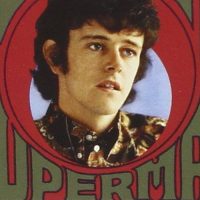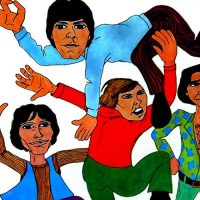The public was introduced to the Lovin’ Spoonful in the late summer of 1965 when the New York band’s debut single “Do You Believe in Magic” reached No. 9 on the nationwide charts. Before the year was over, the Lovin’ Spoonful cracked the Top 10 again with “You Didn’t Have to Be So Nice,” prompting them to become one of the most happening acts on the scene.
Comprised of lead singer, harmonica player and main songwriter John Sebastian, guitarist and vocalist Zal Yanovsky, bassist and pianist Steve Boone and drummer and vocalist Joe Butler, the Lovin’ Spoonful were keenly schooled in blues and folk music. Synthesizing these traditional influences with modern pop-rock perceptions yielded an approach that was equal parts inventive and radio friendly. A fun factor, combined with a colorful visual image, allowed the band instant appeal.
The Lovin’ Spoonful’s second album Daydream (Kama Sutra Records) extended the momentum. Along with the gingerly hum of “You Didn’t Have to Be So Nice,” the title track clasped the airwaves, peaking at No. 2 in the spring of 1966. Directed by an easy-rolling ragtime shuffle, “Daydream” grinned with carefree pleasure. Driven by fast and blistering guitar twangings, “There She Is” swings around and around to dizzying heights, while the soft and gentle “Didn’t Want to Have to Do It” flutters to a breezy blend of folk and jazz inclinations.
The reeling-and-romping “Let the Boy Rock and Roll” clocks in as an affectionate Chuck Berry imitation and the jolly and jaunty “Jug Band Music” serves as an obvious ode to the vintage genre the Lovin’ Spoonful possessed an affinity for. Elsewhere on Daydream, there’s the slow-burning “Day Blues,” the sensual soul-tinted “Warm Baby” and “Big Noise From Speonk,” a moving instrumental marked by pretty piano passages and sophisticated melody lines.
Clever and catchy tunesmith techniques, fused with diversified musical dialogue, led the Lovin’ Spoonful to stand out among their peers. The band really sounded like nobody except themselves, and “Daydream” illustrates such individuality.
The drama of a drug bust unfortunately caused a rift in the Lovin’ Spoonful, resulting in a personnel shake up. The band carried on until the end of the decade, still creating great music. In 2000, the Lovin’ Spoonful were duly recognized for their trailblazing efforts as they were inducted into the Rock and Roll Hall of Fame.
- Why Aerosmith Finally Broke Through With ‘Get Your Wings’ - March 5, 2024
- How ‘The Birds, the Bees and the Monkees’ Blew Away Their Pre-Fab Image - April 10, 2023
- Steve Howe Made a Colorful, Quite Surprising Debut With Tomorrow - February 20, 2023




